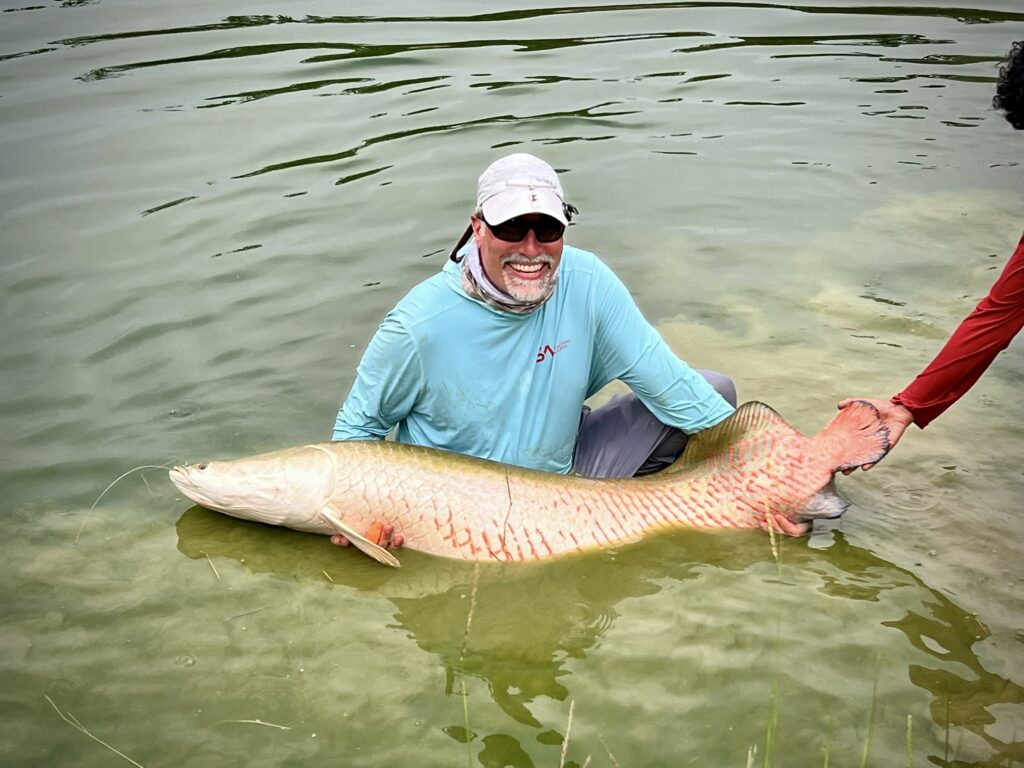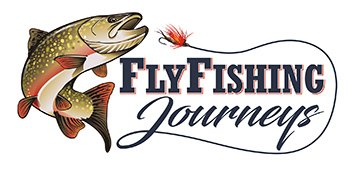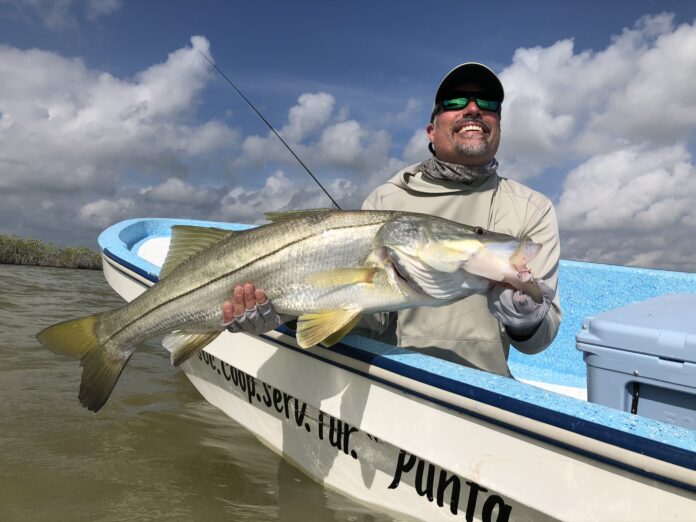Allen Rupp, founder of Fly On The Water, is a professional fly tier with a lifelong passion for fly fishing. Inspired by Fly Fishing The World with John Barrett as a teenager, he became hooked after catching his first bluegill on a fly he tied himself. Today, he crafts flies for species across the globe, from trout and bass to peacock bass, golden dorado, and sailfish.
Fly tying has been around for a while. When were your interests peaked?
When I was 13 or 14 I got hooked by watching, “Fly Fishing The World with John Barrett”
John went to fabulous and wonderful places with some of the biggest names of the time: Michael Keaton, Huey Lewis, Henry Winkler (The Fonz), Robert Duval, Walter Payton, John Denver, Chris Evert, and Kevin Costner are just a few that I remember.
Once I started fly fishing for bluegill with a fly that I tied myself, I was completely hooked.
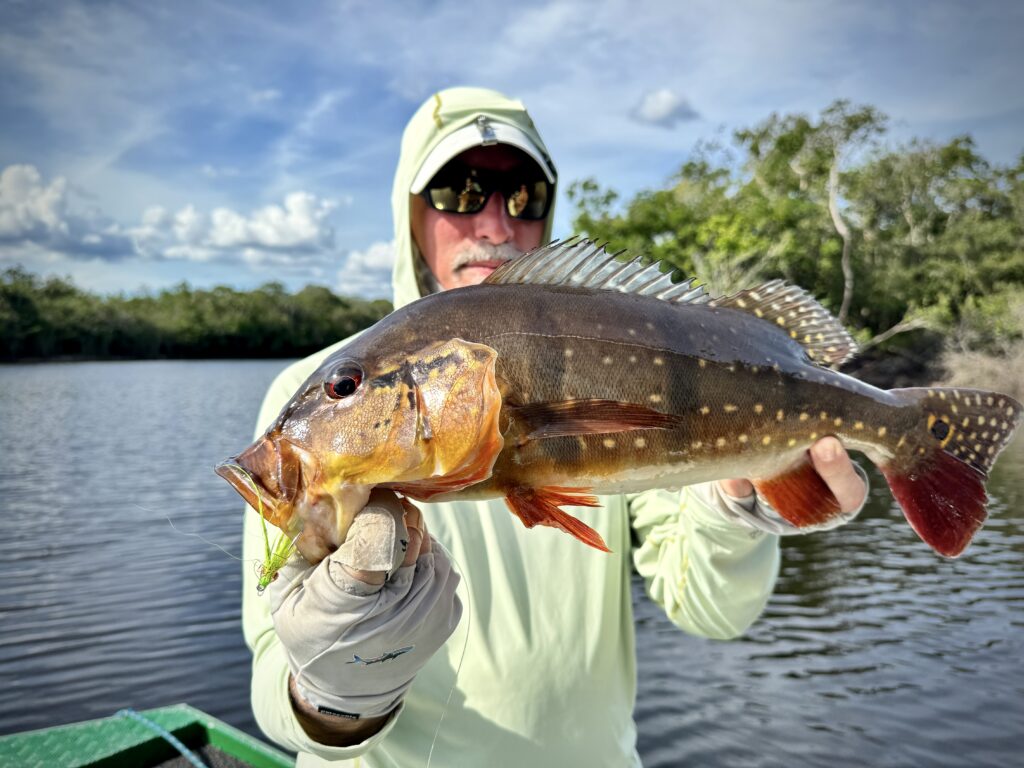
What are some of the fish species you tie flies for?
I tie flies for a large list of fish and destinations all over the world. Some of the more rare and remarkable species I tie for include peacock bass, giant trevally, golden dorado, sailfish, and tigerfish. I also tie for trout, bonefish, bass, stripers, redfish, tarpon, and snook as well.

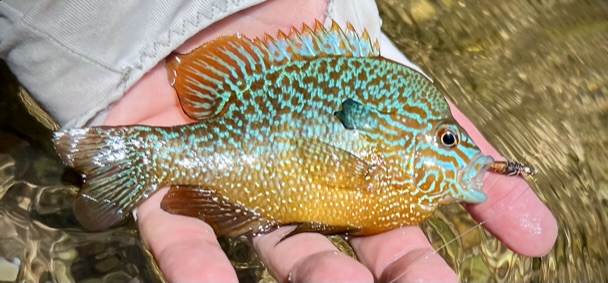
What was your first fishing experience/When did you begin fly fishing?
I remember fishing with worms under a bobber as a very young child (5 or 6 year old) and loving every minute of it. Once I figured out how to tie a letort hopper and catch bluegill on them, I was completely hooked.
What is currently on your vise?
This is a loaded question, I tie flies about fifty hours every week. This week I will tie some big Popovic’s Hollow Fleyes & Beast Fleyes, some of Dave Whitlock’s NearNuff Crayfish & Sculpins, Some of Dave’s Swimming Sheep Shad, Some Mantis Shrimp flies of my own design, some Clouser Minnows, and some Bendback Minnows.
Tell us about any flies that you’ve designed yourself.
I like to combine ideas from other people and see if they make flies better. For example, Bob & Lefty showed me how to tie the Clouser Minnow on a Bendback hook sometime in the 90’s, and I have loved this fly ever since. Then Dave Whitlock asked me to learn some of his flies. After using Dave’s weed guards I began to believe in them as much as he did and added them to lots of my flies. When I added them to the Clouser Bendback Minnow a star was born.
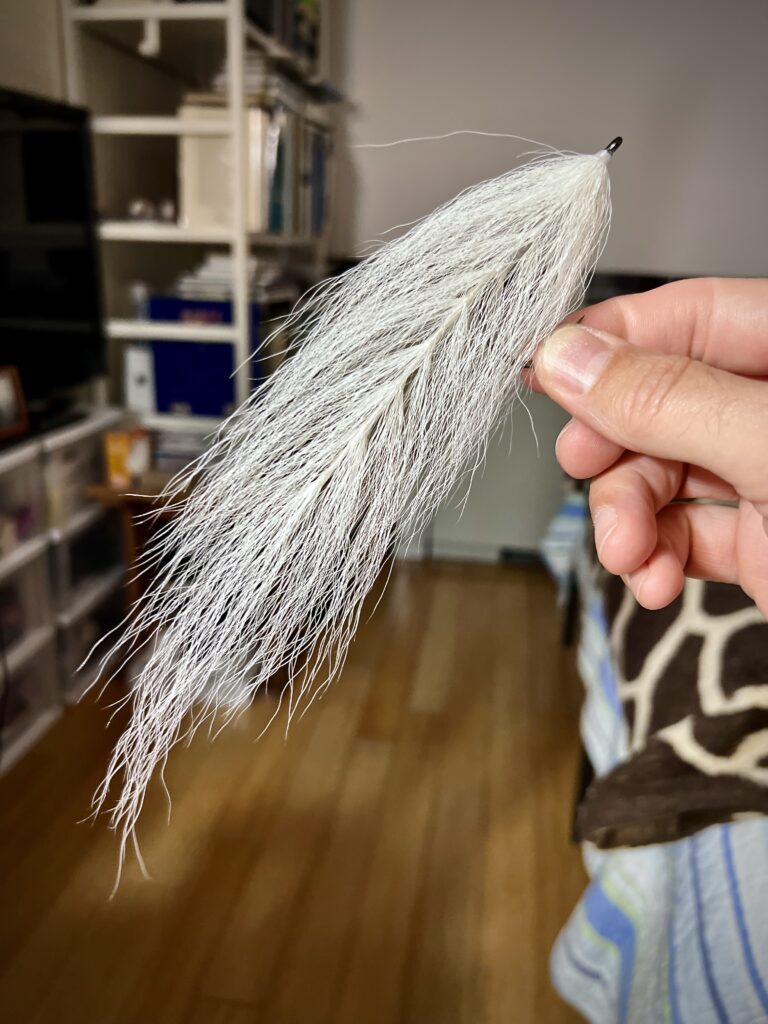
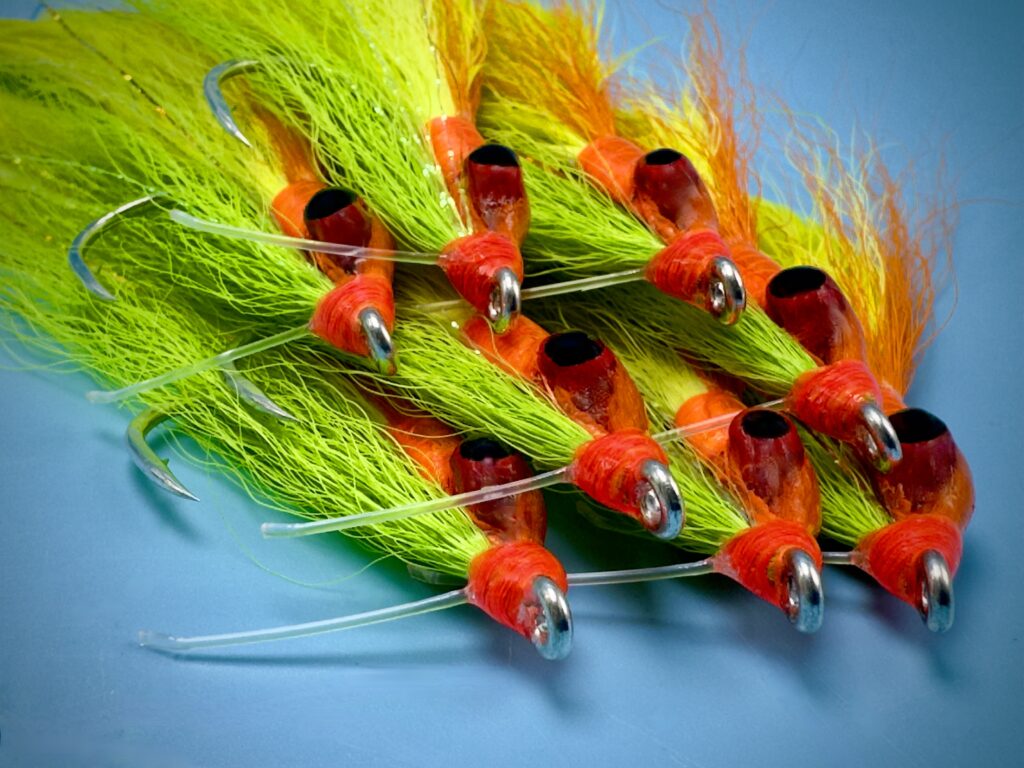
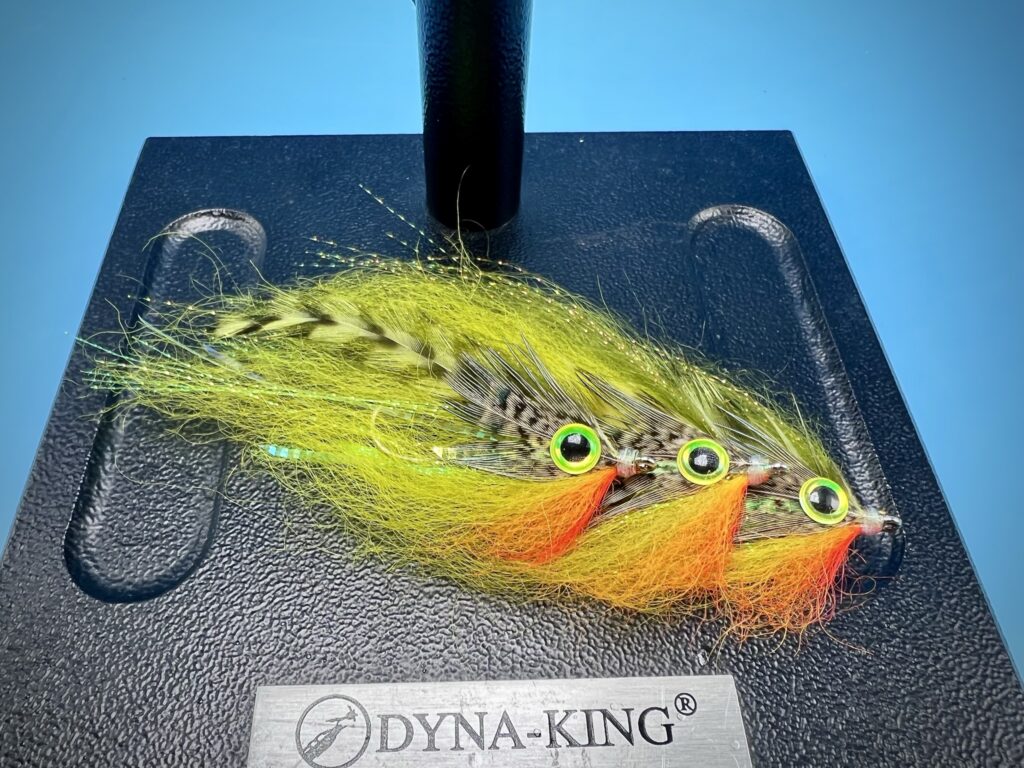
What is it that draws you to fly fishing and fly tying?
Honestly, the people in the industry. Many of the people I have met are so genuine, so kind, and truly helpful people.
We all know the big names that embodied these characteristics: Dave Whitlock, Lefty Kreh, & Bob Popovics.
Bob Clouser, Emily Whitlock, Tim Camissa, Dennis Potter, Tim Landwehr, Rob Rogers, Chad Johnson, have been genuinely kind to me. They have all been such amazing people to get to know.
Who is your biggest inspiration/mentor?
In fly fishing and fly tying it is Dave Whitlock. In life, it is my father.
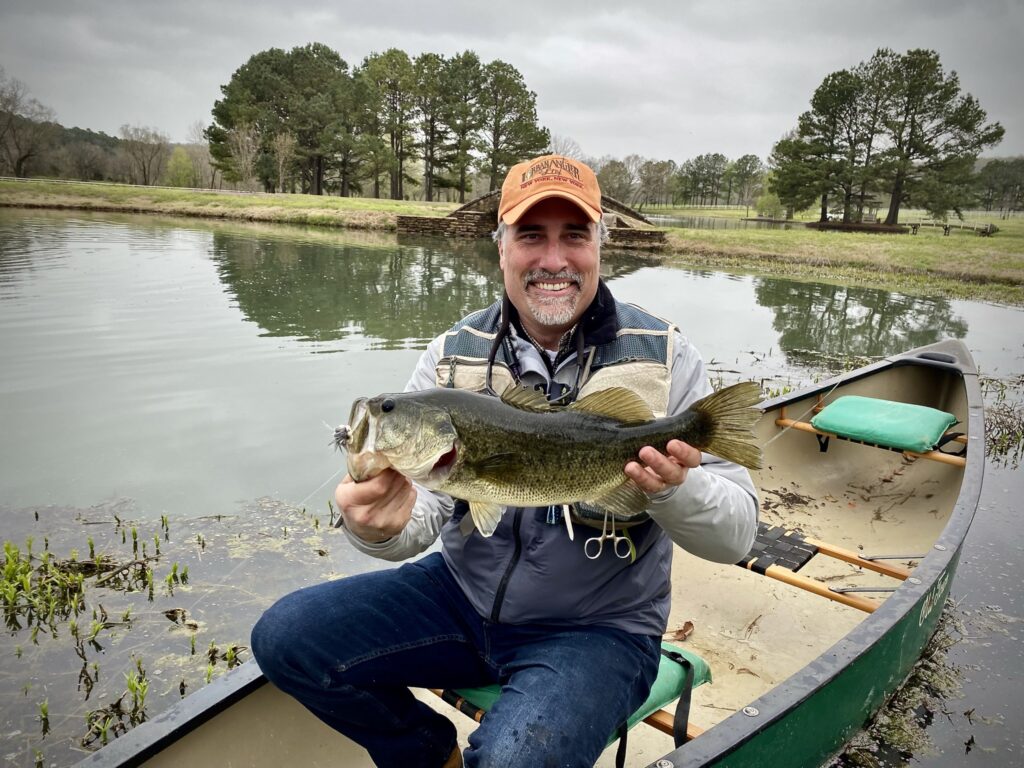
What is your favorite book about fly tying? Why?
It is hard to choose just one, so many have helped shape my philosophy of fly tying, fly design, and fly fishing.
One of the first books that showed me that fly tying could be a cerebral pursuit was, “Designing Trout Flies” by Gary Borger. This was the first book that I owned that was more than just a picture with a recipe. Gary took the time to explain his thinking behind his fly’s design. In the book he explained why he chose a specific dubbing for a nymph, a type of wing on his dry fly, or the way he wrapped his hackle.
Gary used each material and technique to help shape a fly pattern in the way he wanted. He did not accept that we have always done “A” and “B” and “C”. He developed his flies himself, and in his own way. I thought this was a fascinating approach.
A few other honorable mentions would be “Fleye Design” by Bob Popovics, “Feather Brain” by Drew Chicone, “Clouser’s Flies” by Bob Clouser, and “Production Fly Tying” by A.K. Best.
Each of these books taught me valuable lessons that I still use today.
What are some favorite fly tying resources that you direct others to?
I am an avid reader and believe that books are still the best teaching tool we have. The books I mentioned above are great resources as are the following: Presenting The Fly – Lefty Kreh, Fly Fishing For Bass, Smallmouth, Largemouth, Exortics – Lefty Kreh, Fly Fishing For Freshwater Striped Bass – Henry Cowen, Streamer Fly Tying & Fishing – Joseph Bates, Fly Fishing For Smallmouth – Bob Clouser, Selective Trout – Doug Swisher & Carl Richards, Active Nymphing – Rich Osthoff, and Casting Angles – Mac Brown.
What was the first fly pattern you tied?
I honestly have no idea. I know the first good fly I tied that caught a lot of fish and lasted was a Letort Hopper and I used it for Bluegills when they were on the beds of Lake Gaston. I have fond memories of those days.
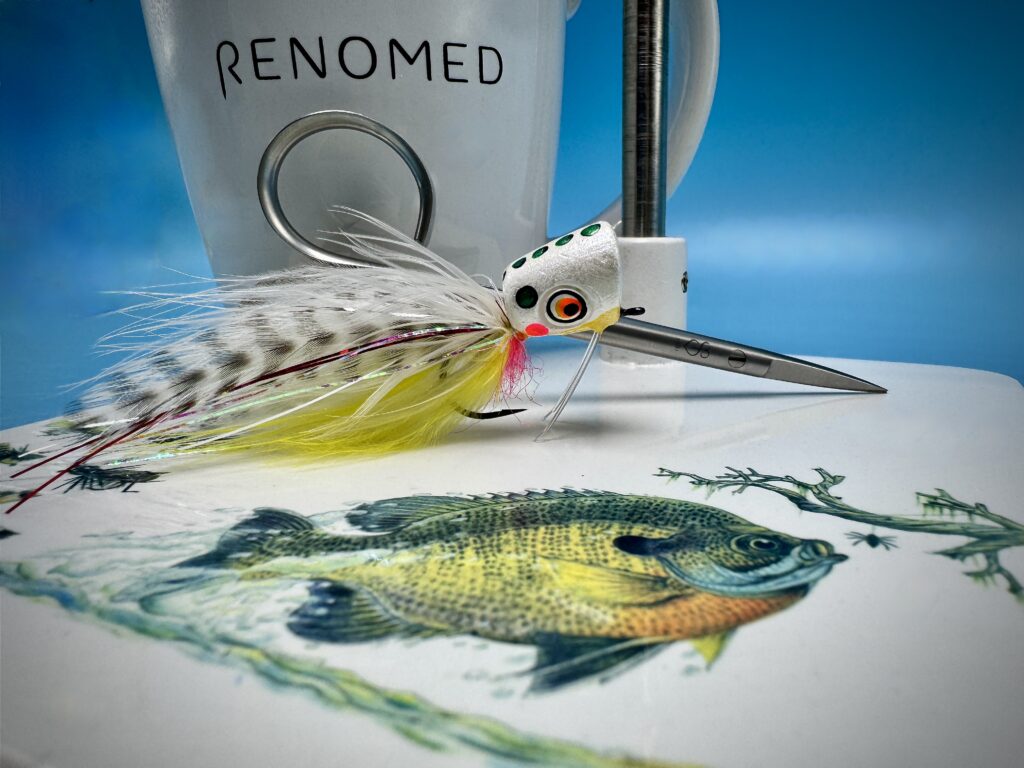
Is there a fly style that you are still interested in learning about?
Very much so, I still love learning and I try to stay open minded. I need to learn more about how water color impacts flies. Tannic water plays some weird tricks on the eye. As does water with a high dissolved mineral content. I want to better understand these.
What advice would you give to someone thinking about beginning fly tying?
Buy a few really good tools, avoid kits, and focus on flies you already fish. Next, take lessons from other people and avoid YouTube for at least two years. As a beginner you will not know that the person on YouTube is teaching you a bad habit or showing you the improper technique. As someone who teaches fly tying, breaking someone of a bad habit is incredibly difficult. They do not see the reason why they need to change. It is hard to get this point across in a one or two hour lesson.
A few really good tools: A Renzetti Traveler vice is a fabulous starter vice, the Renomed Fly Tyer Straight or Curved Scissor is a great investment. Make your own Whitlock Dubbing Brush & Bodkin, and learn two ways to finish your flies off, Zap-A-Gap or hand whip finishes.
What’s the first fly you typically recommend a beginner to learn to tie?
That is tough. Most people start with a wooly bugger, I do not. I believe, “Charlie Craven’s Basic Fly Tying” is the best textbook for how to get someone from zero to tying good flies. It teaches the proper techniques and it teaches them in an order that I believe is properly progressive. In Charlie’s book his first fly is the Brassie, and I think that is a good fly to start with.
Favorite and least favorite thing about tying flies?
My least favorite thing in fly tying is the poor smelling White or Natural bucktail. When these are not properly washed, these things wreak! My favorite thing about fly tying is that when it is done best, when it is done right, joy is created. I either go fishing with my own fly which brings me joy, or, someone uses my fly and it brings joy to them. When youtube the time to smell the roses, and you look back at what selling flies really is, the answer is joy. That is a tremendous honor, to be part of helping someone else find joy.
What fly tying technique took you the longest to learn?
Learning when and how to use all the different adhesives and sealants we have today. Currently I have Head Cement, Dave’s Flexament, Zap-A-Gap, Zap-A-Gap Gel, Zap-A-Goo, Sally Hansons Hard As Nails, Epoxy, Tuffleye Light Cured Acrylic in both Core & Finish, Softex, as well as solvents for all of these. Learning when and where to use each of these products has taken me more than 30 years. I wish someone would have taught me all of this 20 years ago.
Let’s talk about fly tying equipment and materials:
o Tell us about your scissors. Do you use a generic brand or specific style, and why?
I use the Renomed Fly Tyer Curved. I have used every brand you can imagine in the last 35 years. These are the sharpest and longest lasting scissors I have ever used. I switched from straight scissors about 7-8 years ago to curved tips.
o What about bobbins: tension or no tension?
I have a few bobbins that do not have fancy tension adjustments but I do not use them often. I love the Petijean bobbins for a lot of my small to medium size flies. If I am using stronger thread I switch over to my Rite Bobbins. I have had some failures over the years but they have always been quick with a replacement.
o Your tying vise is practically sacred. What is your go-to, and why? How many did you try before deciding this was your favorite?
My fly tying vices are tools to me. None of them do it all. I own three Renzetti vices and one Dyna-King vice. If my hook is larger than a size 8, I am using my Dyna-King. If my hook is size 8 or smaller, you will see one of my Renzetti’s. What I would like to see more people using is a C clamp with a vice extension. I really believe that if people would get their vice off of the pedestal and out over the edge of their desk they would tie better flies. Everytime I travel to a trade show and have to tie on a pedestal vice, I am always having issues with the tabletop being in my way. Dyna-King extensions are what I use,but they are not available as of the time of writing. Renzetti makes a good one that I use when I travel as well.
o Where do you source your fly-tying supplies? Why do you choose these resources over others? (okay to mention more than one resource)
I buy from all over the place, and I pick and choose what I get from each place. I source materials and tools from Gamakatsu USA, Whiting Farms, Rainy’s Inc., Angler Sport Group, Nature’s Spirit, Umpqua Feather Merchants, Flymen Fishing Co., Tuffleye, Dick Blick Art Supply, Owner Corp., Hareline Dubbin, Sideling Hill Hackle, Icon Products, Fly Rite, Ewing Hackle, SemperFli, Rite Bobbins, Dave & Emily Whitlock Fly Fishing, Renomed USA, Xuron Corp., Textreme, Renzetti Inc. and Dyna-King inc. I could not do what I do without all of these partners.
o Do you have a particular type of hackle that you prefer over others?
Whiting Farms is by far the most consistent and the most reasonably priced when you break the cost down to a per fly cost.
o Do you prefer synthetic or natural materials when you use it? (dubbing, hackle, bucktail, etc.)
Natural all the way. Marabou, bucktail, chicken feathers, deer hair, all of these are fabulous materials. The issue for beginners is learning how to judge and choose good quality in all of these. The same piece of deer hair will not tie a deer hair sculpin head, an elk hair caddis, a stimulator, and a comparadun. You can use deer hair for all of these, but the attributes the hair needs for each of these is not the same. This takes a long time to learn.
o What brand of hooks do you prefer to tie on?
My two preferred brands are Tiemco & Gamakatsu.
o What is your preference in head cement and resin?
I use the standard lacquer based head cement from time to time, just as I do Dave’s Flexament, and Zap-A-Gap. Each of these are used to help me finish flies. I use Tuffleye most often as my light cured acrylic. It is a bit tougher to use than some of the newer resins. I like it because it holds onto my flies the best. All of the others tend to chip and flake off more quickly. The durability of any light cured acrylic is important to me.
o Let’s talk about thread… How should a tier approach choosing the right thread for their fly?
That is an excellent question. I have my opinions on this subject, but honestly, most of the threads out there today that are big names are pretty good stuff. I like what I like, but it is all capable of tying a good fly. The only stuff that I believe is head and shoulders better, SemperFli’s Nano Silk. When you need GSP (which is not on every fly) it is the best GSP I have ever used, nothing is even close.
o What’s the one fly tying material you can’t live without? What’s so special about it?
Flashabou. I know I said I love natural materials before. Flashabou is special stuff, and the stuff from Hedron Inc. is the original and the best.
Do you tie for personal use, or do you sell your flies?
I sell flies for a living, this is why I tie flies for 40-60 hours each week.
What is your favorite fly pattern to tie? What is the intended species for the fly?
I really like tying any pattern Dave Whitlock taught me. Each time I sit down to tie it, I remember him showing it to me in his upstairs studio, or the letter he wrote me explaining a finer point about that pattern. These are special memories to me and I cherish them deeply.
Where can people find your work? (Retail store, online store, social media handles, etc)
I sell all of my flies online at: WWW.FLYONTHEWATER.ETSY.COM
Any parting thoughts you’d like us to add?
First off – read more books on this sport. The older books might not have the newest fly pattern from our era, but the reasons they are sharing about how and where to fish their flies are still valid. As a trout fishermen, you should be familiar with all of the works that Swisher & Richards wrote, and Gary LaFontaine’s “Caddisflies” is a perfectly written textbook on the subject. Dick Brown’s books on Bonefish and Bonefish Flies are treatises, and Andy Mills book A Passion For Tarpon is unmatched. All of these authors wrote with the single intention of sharing what they have learned. Pick them up, read them, learn from them.
Secondly, try to always put things in the right perspective. I realized a deeper meaning of this quote in my mid to late forties. I thought I understood it before, but I did not.
I think I might understand it more deeply when I am sixty.
“Many men go fishing all their lives without knowing it is not fish they are after” – Henry David Thoreau
